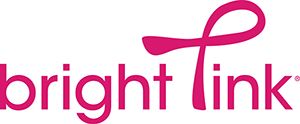
The Mother-Daughter Conversation You Should Have Today

Taking the extra time to have the more difficult conversations with your daughter about her breast health and breast cancer risk has the power to greatly improve and extend her own life.
There are so many important pieces of advice and lessons that we hope to pass along to the young women in our lives. Conversations about growing up and staying healthy come naturally but talking about illness isn’t always included on this list.
Taking the extra time to have the more difficult conversations with your daughter about her breast health and breast cancer risk has the power to greatly improve and extend her own life. In fact, it’s one of the brightest mother-daughter chats you can have.
Personal breast cancer risk accumulates as we age. Decisions we make in our late teens and early 20s can impact our risk of breast cancer later in life, when breast cancer is more likely to occur. And, the health habits we form at early ages can last a lifetime.
While most breast cancers are diagnosed over the age of 50, there were still over 26,000 cases diagnosed under the age 45 in 2017. If you have a genetic predisposition to breast cancer, like a BRCA mutation, we’ve started to see the incidence of cancer rising significantly in women in their 20s and 30s. Why wait to discuss something that your daughter has the chance to be proactive about now?
Understanding Risk in Families
One in 8 women, or 12 percent of women in the country, will be diagnosed with breast cancer. However, if you have a first-degree relative (a mother, a sister, or a grandmother) who was diagnosed with breast cancer, your personal risk automatically doubles. It becomes even greater if that familial risk is coming from a genetic mutation, meaning a fault in one of the genes in your body that is charged with protecting you from cancer.
While rates of genetic mutations are relatively low, some are more common in specific populations. Black women are more likely to have a BRCA2 mutation, which can increase your risk of getting breast cancer to up to 84 percent. One in 40 Ashkenazi Jewish women have a BRCA1 or BRCA2 mutation. And, there are
Know What’s Normal
There are two things that your daughter can do today for her breast and ovarian health: Know what’s normal for her body and know her personal risk.
When talking to your daughter or other women in your family, it’s important to note that when detected early, the five-year survival rate of breast cancer rate can be greater than 98 percent. Early detection starts with establishing an understanding of what’s normal for your body so that you’re more equipped to recognize when something is abnormal.
Encourage your daughter to check in with the look and feel of her breasts regularly. Our breast tissue changes throughout the month and can look very different from person to person. It’s important for her to understand what’s normal for her body. You may not know that breast tissue extends up to our collarbone and down underneath our armpits.
Talk to your daughter about signs and symptoms to keep an eye out for: redness, dimpling, pulling, soreness and changes in size or shape. These symptoms may come and go, but if anything persists for two to three weeks, it’s time for her to call her doctor.
Know Personal Risk
Bright Pink® is a national breast and ovarian health organization. Our interactive
Each question contains a “Why it Matters” section to explain how that factor contributes to your personal breast and ovarian cancer risk. If you don’t have your family health history at your fingertips, you can use the “Help Me Ask Them” button to easily email the question to a loved one.
Assess Your Risk is a great jumping-off point for your daughter to make her breast and ovarian health a priority in the years to come, but don’t let the conversation end here. The most important part is that her newfound awareness is put in action.
Encourage her to take the next step by scheduling her annual wellness woman’s exam and make healthy lifestyle behavior changes. When you do this, you’re giving her the gift of knowledge that can contribute to a healthy future.





